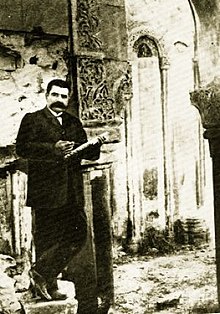


Toros Toramanian (Armenian: Թորոս Թորամանեան; 1864 – March 1, 1934) was a prominent Armenian architect and architectural historian. He is considered "the father of Armenian architectural historiography."[1]



Toros Toramanian (Armenian: Թորոս Թորամանեան; 1864 – March 1, 1934) was a prominent Armenian architect and architectural historian. He is considered "the father of Armenian architectural historiography."[1]
Toramanian was born in 1864, in the town of Şebinkarahisar (Շապին-Գարահիսար in Armenian), Ottoman Empire. He studied architecture at Academy of fine arts in Constantinople, and later at Sorbonne, Paris, and then he worked on the detailed study of the remains of medieval Armenian architectural monuments.
Toramanian's scholarly work paved the way for the scholar, Josef Strzygowski, who, after a long and detailed study of Christian architecture, concluded that Armenian architecture had a significant role in the development of Byzantine and later of West European architecture.[2] In 1920, during the Turkish–Armenian War, Toramanian lost a great part of his scientific study.[3] He died in 1934 in Yerevan and was buried on the bank of Hrazdan river.